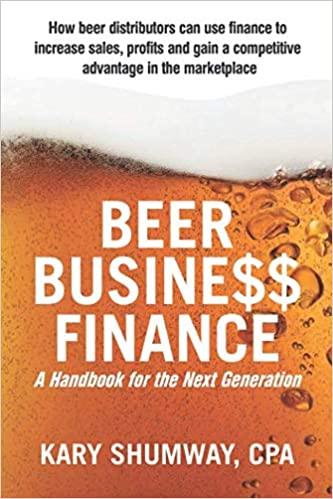Question
Question 2 One way to visualize cash flows, interest rates, and time that is very helpful is to put this information on a: timeline. space
Question 2
One way to visualize cash flows, interest rates, and time that is very helpful is to put this information on a:
| timeline. | ||
| space ship. | ||
| discount double check. | ||
| longitudinal study. |
5 points
Question 3
The type of interest that does NOT take into account compounding is called:
| compound interest. | ||
| simple interest. | ||
| usury interest. | ||
| riba. |
5 points
Question 4
Future value measures:
| what one or more cash flows are worth at the end of a specified period. | ||
| what one or more cash flows that is to be received in the future will be worth today. | ||
| the value of an investment after subtracting interest earned on it for one or more periods. | ||
| the value of an investments worth today. |
5 points
Question 5
The process of converting an amount given at the present time into a future value is called:
| annualizing. | ||
| discounting. | ||
| compounding. | ||
| capital budgeting. |
5 points
Question 6
Which of the following investments will have the highest future value?
| $1,000 invested at an annual interest rate of 5% for 5 years | ||
| $1,000 invested at an annual interest rate of 5% for 10 years | ||
| $1,000 invested at an annual interest rate of 10% for 5 years | ||
| $1,000 invested at an annual interest rate of 10% for 10 years |
5 points
Question 7
Which of the following investments will result in the highest future value?
| $1,000 invested at 10% compounded annually for 5 years. | ||
| $1,000 invested at 10% compounded quarterly for 5 years. | ||
| $1,000 invested at 10% compounded monthly for 5 years. | ||
| $1,000 invested at 10% compounded continuously for 5 years. |
5 points
Question 8
The process of converting an amount in the future to the present time is called:
| annualizing. | ||
| discounting. | ||
| compounding. | ||
| capital budgeting. |
5 points
Question 9
All else equal, when the discount rate:
| decreases, the present value of the future cash flow does not change. | ||
| decreases, the present value of any future cash flow increases. | ||
| increases, the present value of any future cash flow increases. | ||
| increases, the present value of any future cash flow does not change. |
5 points
Question 10
Who is the mathematician credited with discovering the number e = 2.71828?
| James Edgeworth | ||
| Eve | ||
| Emilio Estevez | ||
| Leonhard Euler |
5 points
Question 11
Kate Eden received a graduation present of $2,000 that she is planning on investing in a mutual fund that earns 8.5 percent each year. How much money can she collect in 3 years?
5 points
Question 12
Your bank pays 5 percent interest semiannually on your savings account. The current balance in the account is $3,000. How much money will you have at the end of four years?
5 points
Question 13
Santiago Hernandez is planning to invest $25,000 in a money market account for two years. The account pays interest of 6.0 percent compounded on a monthly basis. How much money will Santiago Hernandez have at the end of two years?
5 points
Question 14
You invest $1,500 in a mutual fund today that pays 9 percent interest every year. How long will it take to double your money in years?
5 points
Question 15
What is the future value of $10,000 invested at 10% for 10 years with continuous compounding?
5 points
Question 16
You bought a corporate bond for $863.75 today. In five years the bond will mature and you will receive $1,000. What is the rate of return on this bond?
5 points
Question 17
What is the present value of a $10,000 investment received in five years at 10 percent compounded semiannually?
5 points
Question 18
What is the present value of $10,000 received in five years at 10 percent compounded monthly?
Question 19
What is the present value of $10,000 received in five years at 10 percent compounded continuously?
5 points
Question 20
Sam Braxton, the number one draft pick of the Phoenix Cardinals (NFL), and his agent are evaluating the following contract option. The contract provides for a series of annual payments over the next three years. What is the present value of these payments if Sam's required rate of return is 10 percent? (Hint: discount each cash flow to the present and then sum.)
Year 1: $1,000,000
Year 2: $1,250,000
Year 3: $1,500,000
Step by Step Solution
There are 3 Steps involved in it
Step: 1

Get Instant Access to Expert-Tailored Solutions
See step-by-step solutions with expert insights and AI powered tools for academic success
Step: 2

Step: 3

Ace Your Homework with AI
Get the answers you need in no time with our AI-driven, step-by-step assistance
Get Started


